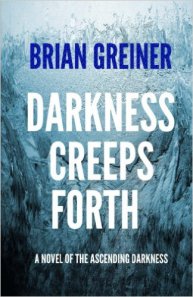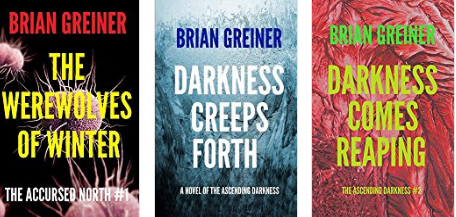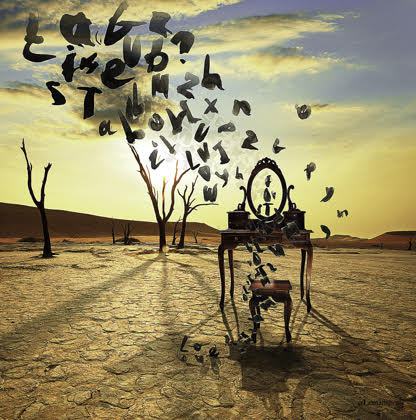What’s a writer of thrillers to do when reality outstrips fiction?
by Brian Greiner
The great fun in writing thrillers is playing with fascinating
technologies and concepts. The problem with thrillers is that eventually,
reality renders all that great tech obsolete—sometimes laughably so. So
how can a writer deal with the inevitable obsolescence of their
carefully-crafted worlds? One way is to simply ignore the problem and
treat the novel as something with a limited shelf life. The other way is
to focus on larger issues, with the technology simply serving as an
exemplar to highlight those issues.
Check out, for example, “The Machine Stops” by E.M. Forester, published
in 1909. He wrote about a society in which individuals became
increasingly isolated (both physically and emotionally) from each other
due to technology. His predicted technology is, from our vantage point,
laughably primitive. And yet, by focusing on the individuals and
relegating the tech to functional requirements rather than obsessing
about the nuts and bolts, he created a story that still speaks useful
truths.

A somewhat more modern example is the short story “Let There Be Light”
by Robert Heinlein, published in 1940. His hero came up with a way of
efficiently converting light to electricity. Heinlein’s brilliance was
to use that as just the starting point of story, which was about how his
hero overcame an established syndicate bent on preserving its monopoly.
Sound familiar? Of course it does—that theme has been used countless
times, but rarely as effectively.
Sometimes reality outstrips both the technology and how it gets used.
That can result in the issues themselves becoming blurred and mutated.

In my “Ascending Darkness” conspiracy thriller series, one of the plot
points involves a conspiracy to rig elections in Canada and other
countries. This was based on long-standing security concerns about
weaknesses found in electronic voting machines as well as on-line
voting. A year and a half after publishing the first book, “Darkness
Creeps Forth”, I came across a series of articles about a voting machine
used in the USA that was so bad that it was finally decertified for use.
I mean, so bad that the built-in WiFi had the WEP password set to
“abcde”, and it couldn’t be changed. The Windows XP operating system
administrator password was permanently set to “admin”. No, really! Check
out the articles for yourself. The first
(http://www.theguardian.com/us-news/2015/apr/15/virginia-hacking-voting-machines-security)
is a good overview, and references the second article. The second
article
(https://freedom-to-tinker.com/blog/jeremyepstein/decertifying-the-worst-voting-machine-in-the-us/)
has the real nuts and bolts of the story. Be sure to read the comments –
they include a discussion with an official who defends the use of that
model of voting machine! I can’t think of many authors who could create
a fictional character as realistically clueless as this real-life one.

In the second book of the series, “Darkness Comes Reaping”, I have the
main characters use voting pattern analysis to detect nefarious
activity. Well, yet again reality outpaced me. Less than a year after
publishing it, I found out that a statistician claims to have detected
anomalous voting patterns throughout the USA that favour the Republicans
(http://www.kansas.com/news/politics-government/article17139890.html#/tabPane=tabs-b0710947-1-1).
He isn’t sure if the results indicate some unknown voter demographic or
vote rigging, so he’s suing for the right for access to more detailed
information so as to better investigate the matter.
All this was beginning to whet my interest, so just for fun I downloaded
the data for the last six Canadian federal elections excluding the most
recent one
(http://www.elections.ca/content.aspx?section=ele&dir=pas&document=index&lang=e).
There is data on a poll-by-poll basis plus summary data that gives the
results on a riding-by-riding basis. The latter data is actually quite
interesting. For each riding it lists all the candidates and how many
votes each got PLUS the number of spoiled (and therefore ineligible)
ballots each got. Most of the spoiled ballot rates are less than 1%, but
a small number are nearly 3%. That bears looking into, I think … the
obvious thing to check is whether the ridings with large numbers of
spoiled ballots stay consistently high from election to election. Voter
turnout ranges from awful to not bad, and again it would be interesting
to see how this trends over time for each riding, and whether this
correlates with the type of balloting technology used. Certainly an
interesting project to look into for its own sake, and maybe the basis
of an interesting story.
Then came the American election of 2016. That whole thing, from
primaries to the final result, blew away a whole lot of
carefully-crafted plot-lines for my series. Once again, reality moved
faster than my writing (then again, an exhausted snail could beat my
writing speed a lot of the time). So much so that I decided to focus on
another series, “The Accursed North”, which incorporates technologies
that are a bit more vague and less likely to be realized any time soon.
This second series focuses on the adventure side of the thriller
spectrum, which makes it more resistant to being overtaken by reality.
There are several lessons to be learned, I think. The first is to write
stories that focus on personal interactions. The second is to focus on
the effects of that type of tech on society, rather than the specific
technology. The third is to look beyond the obvious effects, and think
about second- and third-order effects. Strive to make your story one for
the ages, while being entertaining.
Thanks to Brian for his guest post. You can find all his books and a little bit about him by visiting his author’s page on Amazon or his website. We are proud that he is a participating MTW author.

Share this:






